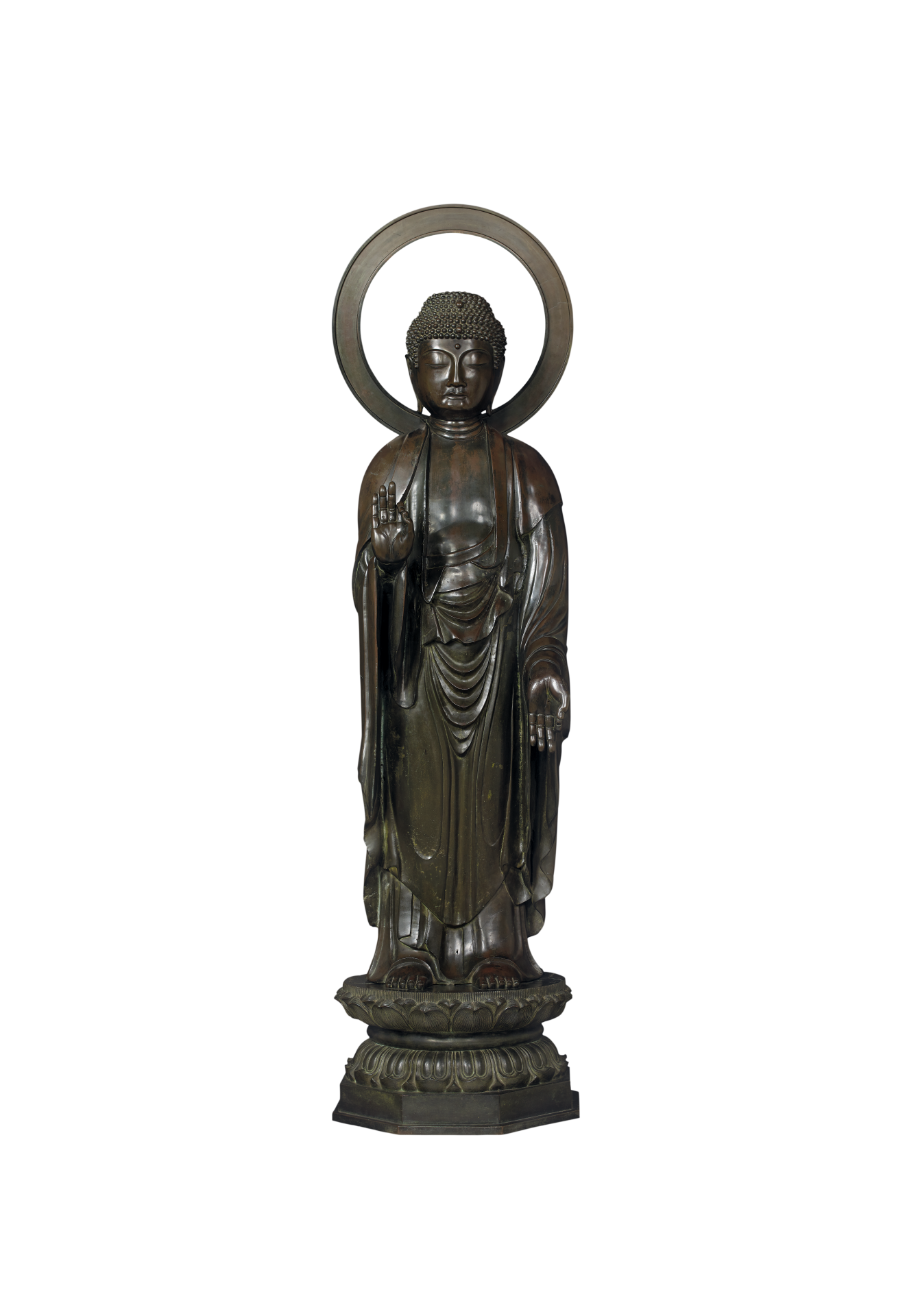Standing Amitābha Buddha
The Pure Land School (known as Jōdo-shū in Japan), an important tradition in East Asian Buddhism, advocates that as long as a devotee persists in reciting the epithet of Amitābha Buddha with unwavering faith, aspiration and action, this Buddha and his holy retinue will come to guide the devotee to take rebirth in the Pure Land when the latter dies.
According to the Amitāyurdhyānasūtra (Amitābha-mindfulness Sutra), due to the varied karmic achievements of the devotees, there are nine grades of rebirth in the Pure Land, indicated by nine different hand gestures displayed by Amitābha Buddha when he comes to welcome the deceased. The welcoming gesture displayed by this Amitābha statue with the tips of the thumb and the index finger touching each other, right hand up and left hand down, signifies the deceased belongs to the “the lower grade of the superior class”. It is used to greet those deceased who believe in karma, have not defamed Mahāyāna Buddhism and have the supreme heart of the true practitioners. They will be reborn in the Western Paradise.
The ring-like nimbus behind the head of this Amitābha statue is separately cast. The statue has an oblong face, a protruding uṣṇīṣa with a rather flat top, tight snail-like curls of hemispherical shape set with two gems, an ūrṇā in the middle of the forehead; relatively flat facial features, willow-leaf shaped narrow eyes, a long nose bridge with broad nostrils, a slightly protruding chin, a smiley expression, together with a peaceful and relaxed countenance.
Under the loose kāṣāya is an undergarment (saṃkakṣikā) and a long skirt. He is standing barefooted on a waisted double-lotus pedestal. The statue has a well-proportioned build with round shoulders, an exposed chest, a slightly bulging belly and soft fleshy limbs. The drapery is elaborate yet fluid, while its form and posture are precisely rendered and minutely represented.
